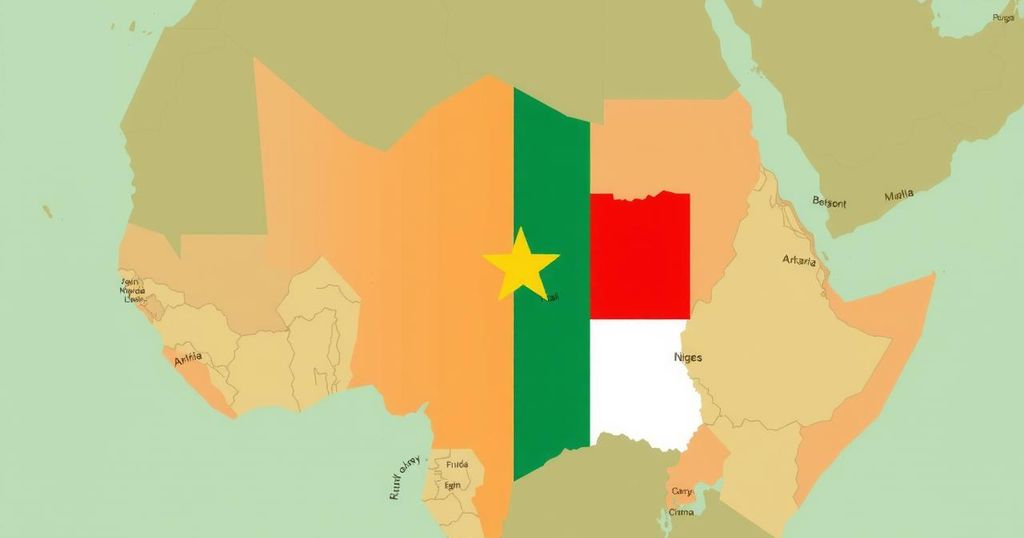Indigenous communities in Peru are expressing significant opposition to a federal highway project threatening their lands and protected areas. Consultation processes required by law have been inadequately implemented, leading to fears of increased crime and environmental degradation. Legal experts argue that the project’s division into parts aims to obscure impacts and expedite approvals. There is a pressing demand for increased transparency and genuine engagement with affected communities.
In Peru, the ongoing construction of a federal highway has provoked significant concerns among Indigenous communities, specifically the Maijuna, Kichwa, Bora, and Huitoto peoples. This project threatens their ancestral lands and two protected areas, leading to fears of social conflict, crime, and environmental degradation in the Amazon. While some local residents support the highway for improved access to markets and healthcare, there is a unanimous call for the government to conduct proper consultations, which has only been partially fulfilled in one community.
The 188-kilometer Bellavista-Mazán-Salvador-El Estrecho highway, intended to facilitate transportation, is also perceived as a conduit for illegal activities, including drug trafficking, with a serious risk to local wildlife habitats. Initial phases of construction have already demonstrated these adverse effects. Although some communities welcome the potential benefits, concerns around inadequate consultation overshadow these benefits.
José Murayari, vice president of the Organization of the Indigenous Peoples of the Eastern Amazon, articulated the communities’ stance: “We demand that a sustainable road be built.” Despite the declaration of public interest in 2011, the highway’s completion timeline remains uncertain, and the segmentation of the project into parts is viewed by legal experts as a tactic to minimize perceived impacts while hastening approvals.
Environmental and legal organizations raise alarms regarding the potential increase in illegal logging and drug trafficking due to the road. The completed first section has already subjected local communities to threats, crime, and socio-environmental issues. Arthur Francis Cruz Ochoa, a leader from the Centro Arenal Native community, reported significant increases in crime and drug trafficking following the initial construction stages.
As the Ministry of Transportation has initiated further technical studies for the highway, doubts persist about the adequacy of environmental assessments. The second segment is delayed, and the fourth part poses an extensive risk to the Maijuna-Kichwa reserve and endangered wildlife species. Additionally, other increasingly severe impacts are noted by Indigenous leaders along the route, including intimidation from drug traffickers opposed to vocal opposition of the project.
Indigenous organizations criticize the government for failing to adhere to mandatory consultation laws. Currently, only one community is engaged in the consultation process. Following the amendment of a law in 2018, Indigenous consent represents a recognized right, yet it is not obligatory under Peruvian law. The consultation process lacks transparency, as definitions of indirectly impacted areas are vague, enabling governmental discretion over whom to include in consultations.
This controversial segmentation of the project undermines thorough environmental evaluations, as legal experts warn it allows for violations of environmental obligations that come with comprehensive assessments. Such practices are part of a larger, global trend to obscure project impacts regarding Indigenous rights and environmental integrity.
The Bellavista-Mazán-Salvador-El Estrecho highway project illustrates critical challenges within Indigenous rights, government accountability, and environmental stewardship in Peru, underscoring the urgent need for increased transparency and genuine consultation with affected communities.
In conclusion, the federal highway project in Peru has ignited serious concerns amongst Indigenous communities regarding its potential socio-environmental impacts. The call for proper consultation remains a critical demand among many groups, asserting their rights to be involved in decisions affecting their lands. As the project progresses, legal and environmental experts highlight the dangers of project segmentation and inadequate assessments, which jeopardize both Indigenous rights and local ecosystems.
Original Source: news.mongabay.com




